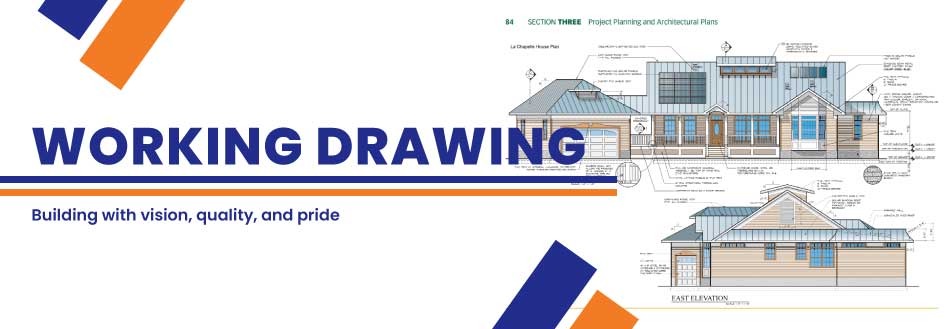
IS Code Training in India
- Real-Time Experts Sessions
- LIVE Project
- Certification
- Affordable Fees
- Flexibility
- Placement Support
by the Bureau of Indian Standards (BIS) to ensure the quality and safety of products and services in India. These codes cover construction, engineering, electrical field.
The Bureau of Indian Standards publishes these codes for the harmonious development of the activities of standardization, marking, and quality certification of goods. These codes are prepared after extensive research done across the country by reputed construction companies and organizations. The IS codes are freely available in public resources and can be downloaded from the internet.
Applications
• Building codes are written to provide required guidelines for design and construction of different structures.
• They are written by experts and are revised from time to time to bring them in line with current trends and advancing research.
• These codes provide safety to the structure, make the work for designers very easy and they provide consistency among different designers.
• The codes also provide legal support.
• The code gives the all kind of basic information of the design and material characteristic.
Course Highlights:
IS Code advance:
• Introduction
• Types of IS Codes.
• Use of IS code
Duration :
7 Hours Theory
7 Hours Practical
Technical Features:
Introduction:
A large number of Indian Standard (IS) codes are available that are meant for virtually every aspect of civil engineers in their educational or professional life. Civil engineers engaged in construction activities of large projects usually have to refer to a good number of IS codes.

Types of IS codes for Civil Engineering field:
• IS: 456-2000– code of practice for plain and reinforced concrete.
• IS: 800-2007 – General Construction In Steel – Code of Practice
• IS: 383-1970 – specifications for fine & coarse aggregate from natural sources for concrete.
• IS: 457-1957– Code of Practice for General Construction of Plain and Reinforced Concrete for Dams and Other Massive Structures
• IS: 516-1959– Method of Tests for Strength of Concrete
• IS: 269-1989–Specification for Ordinary Portland Cement, 33 Grade
• IS: 4926-2003 – Code of Practice Ready-Mixed Concrete
• IS: 8112-1989 – Specification for 43 grade ordinary Portland cement
• IS: 10262-2009 – Guidelines for concrete mix design proportioning
• IS: 12269-1987 – specifications for 53 grade OPC.
• SP: 16-1980 – Design Aids for Reinforced Concrete to IS 456:1978
• IS: 2750-1964 – Steel Scaffoldings
• SP-7: GROUP 1-2005 – NATIONAL BUILDING CODE OF INDIA 2005 GROUP 1
• IS: 1200-1-1992 – Methods of measurement of building and civil engineering works, Part 1: Earthwork
• IS: 1200-2-1974 – Method of measurement of building and civil engineering works, Part 2: concrete works
• IS: 1200-3-1976 – Method of Measurement of Building and Civil Engineering Works, Part III: Brickwork
• IS: 1200-4-1976 – Method of measurement of building and civil engineering works, Part 4: stone masonry
• IS: 1200-5-1982 – Method of measurement of building and civil engineering works, Part 5: form work
• IS: 1200-6-1974 – Method of measurement of building and civil engineering works, Part 6: refractory work
• IS: 1200-7-1972 – Method of measurement of building and civil engineering works, Part 7: hardware
• IS: 1200-8-1993 – Method of measurement of building and civil engineering works, Part 8: steel work and iron work
• IS: 1200-9-1973 – Method of measurement of building and civil engineering works, Part 9: roof covering (including cladding)
• IS: 1200-10-1973 – Method of measurement of building and civil engineering works, Part 10: ceiling and linings
• IS: 1200-11-1977 – Method of measurement of building and civil engineering works: Part11 paving, floor finishes dado and skirting
• IS: 1200-12-1976 – Method of Measurement of Building and Civil Engineering Works, Part XII: Plastering and Pointing
• IS: 875-1-1987 – Code of Practice For Design Loads (Other Than Earthquake)For Buildings And Structures, Part 1: Dead Loads – Unit Weights of Building Material And Stored Materials (Incorporating IS 1911 : 1967)
• IS: 875-2-1987 – Code of Practice for Design Loads (Other Than Earthquake) For Buildings And Structures, Part 2: Imposed Loads
• IS: 875-3-1987 – Code of Practice for Design Loads (Other than Earthquake) for Buildings and Structures, Part 3: Wind Loads
• IS: 875-4-1987 – Code of Practice For Design Loads (Other Than Earthquake) For Buildings And Structures, Part 4: Snow Loads
• IS: 875-5-1987 – Code of Practice For Design Loads (Other Than Earthquake) For Buildings And Structures, Part 5: Special Loads And Combinations
• IS: 1893-1-2002 – Criteria for Earthquake Resistant Design of Structures, Part 1: General Provisions and Buildings
• IS: 1893-1984 – Criteria for earthquake resistant design of structures
• IS: 4326-1993 – Code of practice for earthquake resistant design and construction of buildings
• IS: 13827-1993 – Improving earthquake resistance of earthen buildings – Guidelines

Use of IS codes:
There are several important IS codes in civil engineering that construction professionals and civil engineers should be familiar with. Here are some of the different types of IS codes:
1. IS 456: This code provides guidelines for the design and construction of reinforced concrete structures. It covers aspects such as materials, structural design, durability, and construction practices.
2. IS 800: This code deals with the general requirements for the design of steel structures. It provides guidelines for the use of structural steel in buildings, bridges, and other similar structures.
3. IS 1893: This code focuses on earthquake-resistant design and construction. It provides guidelines for the seismic design of buildings, bridges, and other structures to ensure their safety during earthquakes.
4. IS 3370: This code covers the design and construction of concrete structures to resist the effects of various types of loads, including wind, snow, and temperature variations.
5. IS 383: This code specifies the quality and grading requirements for fine and coarse aggregates used in concrete. It ensures that the aggregates used in construction meet the necessary quality standards.
6. IS 10262: This code provides guidelines for the mix design of concrete. It covers aspects such as the selection of materials, proportioning of ingredients, and water-cement ratio to achieve the desired strength and workability of concrete.
7. IS 1200: This code specifies the standard schedule of rates for various items of construction work. It helps in estimating the cost of construction projects and serves as a reference for billing purpose.

Upcoming Batches
Certifications

Working Drawing Certification Training
About Working Drawing Certification Training in Indore at Tech Cluster
Reviews


















